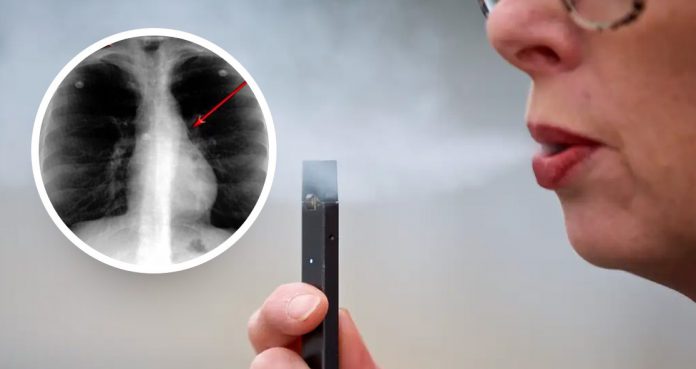According to radiology, E-cigarette or Vaping Associated Lung Injury (EVALI) presents with an organizing pneumonia pattern and other findings.
Dr. Seth Kligerman from the University of California, San Diego, told Reuters, “By suggesting the diagnosis of EVALI when one of the more common imaging patterns is encountered, the radiologist can alert the clinician to obtain a more detailed history in regards to vaping if not previously performed.”
“Conversely, if an atypical imaging pattern is seen on CT or radiograph when a clinician suspects EVALI due to the clinical history, the radiologist can help steer the clinician away from the diagnosis,” he added.
Dr. Kligerman and his team noted that EVALI remains a diagnosis of exclusion, even in patients who have a history of recent vaping. However, to diagnose EVALI, chest imaging findings should also be abnormal.
The researchers looked at the findings associated with EVALI and paid special attention to radiological imaging by chest x-ray and chest CT scans of over 100 cases.
They found three injury patterns:
- organizing pneumonia
- diffuse alveolar damage
- acute fibrinous pneumonitis with organization
The authors explained, “Although the imaging findings of EVALI overlap with other causes for similar patterns of acute lung injury, in the correct clinical context, radiologists can strongly suggest EVALI as a consideration.”
“Therefore, when imaging findings suspicious for EVALI are found, direct communication with treating physicians is recommended to ensure that EVALI is considered as a potential diagnosis; this will help to ensure rapid diagnosis and the prompt institution of appropriate therapy,” they concluded.
Dr. Kligerman said, “A detailed vaping history should be obtained on all patients. Although there is no definitive treatment for EVALI, the early and accurate diagnosis can allow for the rapid initiation of supportive care and the potential administration of corticosteroids.”
He continued, “We still don’t know the long-term consequences of having this lung injury.”
“While a small percentage die and one patient has undergone lung transplant, many patients have severely damaged lungs that will likely lead to long-term pulmonary issues,”added Dr. Kligerman. “Additionally, even in the cases that resolve, it wouldn’t be surprising if this injury leads to some long-term deleterious effects to lung function.”





















